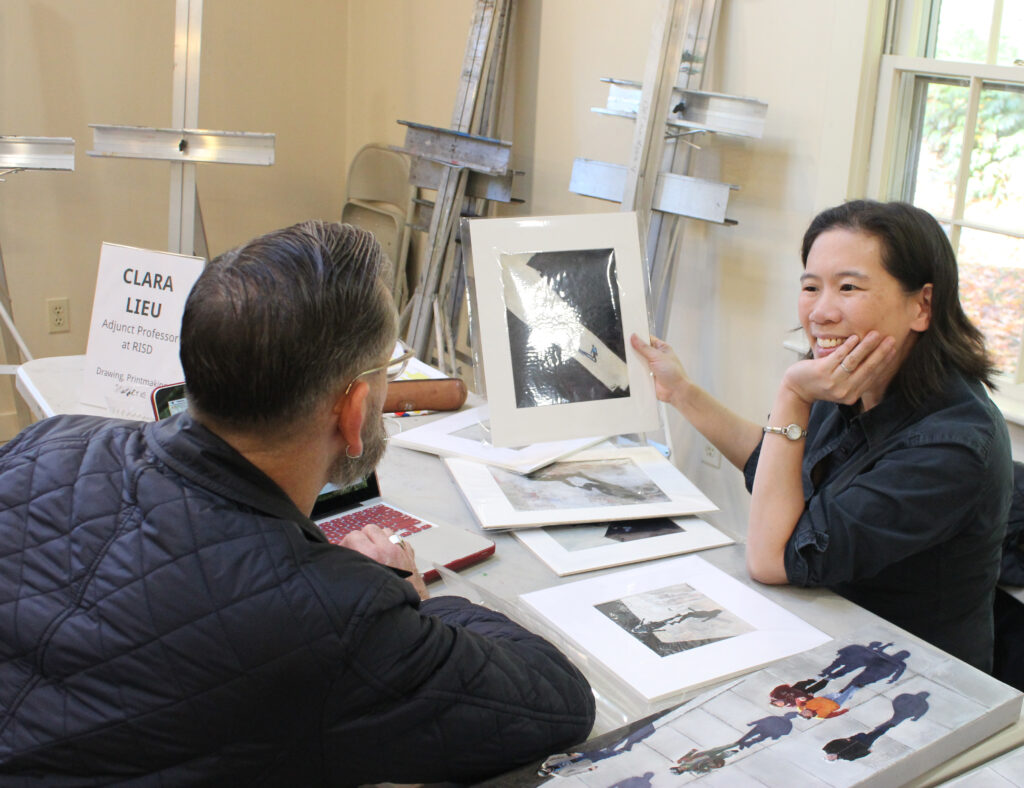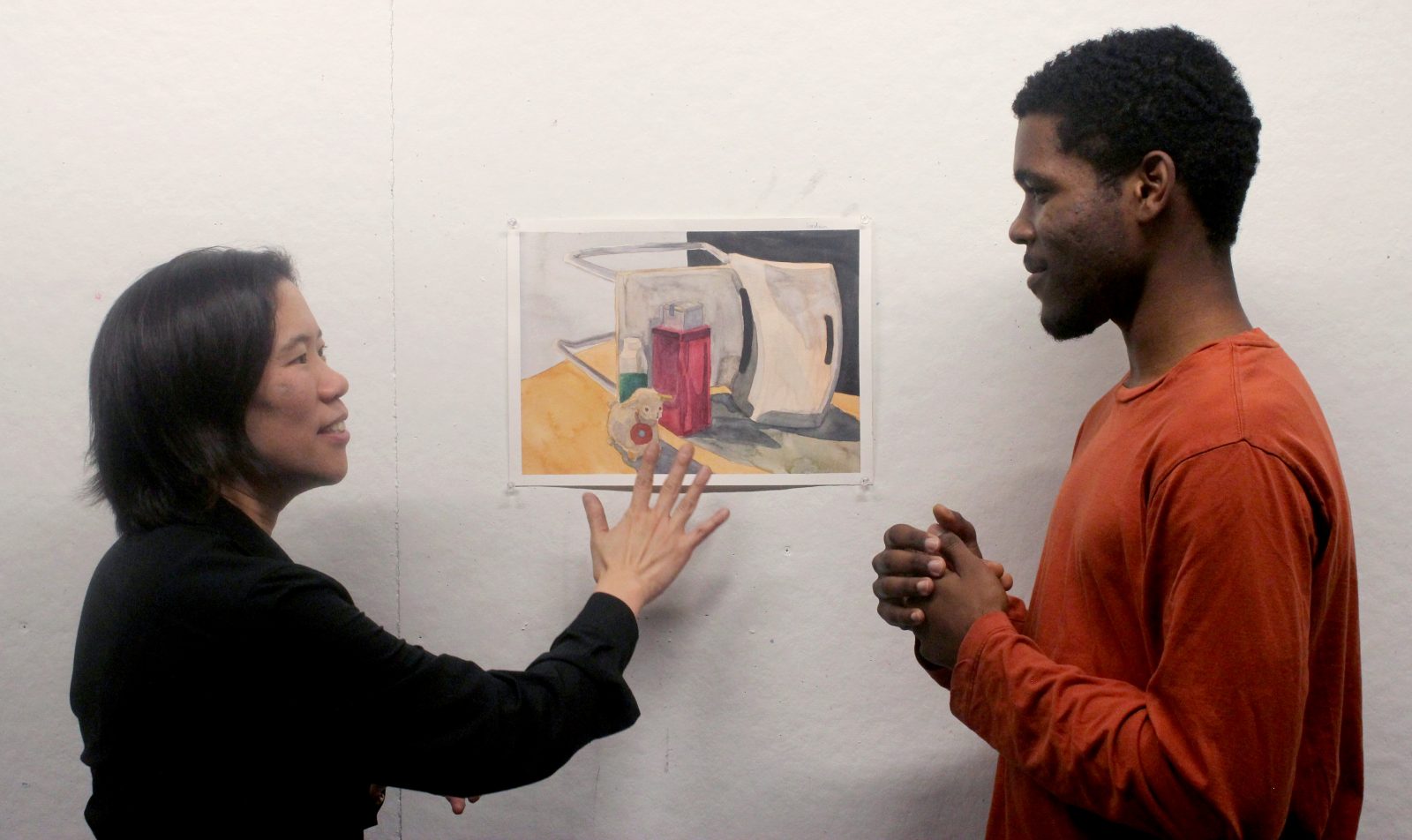It’s easy to find excuses to skip critiques in our art rooms. There’s not enough time. We don’t feel confident in leading them. Kids just don’t seem very engaged.
The list could go on forever.
However, critiques help our students learn how to reflect. They give students the insight and ability to refine their work. In short, they are vitally important. With the right approach, you can run successful critiques that are worthwhile and enjoyable!
To help inspire teachers to incorporate critique into the classroom, I enlisted the help of Clara Lieu. You may know her as a founder of the Art Prof website where she shares video critiques featuring students and their work.
Lieu was a guest on Art Ed Radio this week where the discussion focused on critiques. We talked about different types of critiques, common critique problems (and possible solutions), the right approach to build students’ confidence, and so much more. You can listen to the episode here.
Below are 4 takeaways from the episode, quotes and ideas from Lieu, and strategies for your classroom.
1. Let your students take the floor.
A critique needs to be a conversation. If you are the one doing all the talking, and asking all the questions, what are your students getting out of the experience? “I see it as a mutual exchange between the students and the teacher that shares ideas and opinions,” Lieu posited. “It’s really important to me that students are a lively part of the conversation. I want to hear many different points of view; I want students to disagree with each other, to bring different types of ideas. I think a successful critique needs to be highly interactive.”
2. Make sure everyone is involved.
Making sure everyone is involved starts with creating an environment where students are at ease. Lieu said, “I don’t care about having the right language or a particular way of speaking. I just want you to engage and make it a good experience. A successful critique is up to the group.”
But, what if students aren’t interested? How do you get reluctant students involved?

Lieu told me, “I don’t call on them, because it usually just adds to the stress.” She suggested pulling students who are reluctant to speak aside. Find an opportunity for a one-on-one discussion. Tell them you’ve noticed their hesitation, and ask them to tell you how they’re feeling. Approaching them outside of the critique setting and opening the discussion differently is often all the encouragement they need.
Are you looking for even more tips about running critiques in the art room? If so, you won’t want to miss the Art Ed PRO Learning Pack, Finding Success with Critique at Every Level. You’ll explore methods for simplifying critique methods and activities, discover how to encourage students to reflect on their artmaking for increased engagement, and so much more!
3. Don’t be afraid to divide your class.
The logistics of critiques with thirty or more students can be daunting. With a group that large, it’s hard for students to receive deep and meaningful feedback. According to Lieu, a group of 15 students is ideal. “But come on,” she said. “How many of us teach classes with fifteen students?”
Her solution? Divide your class in half.
If you are involved in a long-term project, it’s ok to take two days. Half the class critiques while the other half works on day one, and the roles are reversed on day two. This method not only gives you enough students to facilitate a successful discussion, but it also gives students the attention they deserve.
4. Give kids a takeaway.

Students need to leave a critique with a concrete plan. “If students leave a critique not knowing about the impact of their piece, or not knowing what to do next, that is not empowering,” said Lieu. Make sure your students have a next step, whether that’s a short-term task or a long-term goal. The idea is to make sure kids are excited about the direction they’re headed and ready to make more art.
Critiques should be inspiring. They should give students a clear sense of what they are doing well and where their work could go in the future. No matter what method you use, this is a worthwhile goal to work towards.
What are your best strategies for a successful critique?
What do critiques look like in your classroom?
Magazine articles and podcasts are opinions of professional education contributors and do not necessarily represent the position of the Art of Education University (AOEU) or its academic offerings. Contributors use terms in the way they are most often talked about in the scope of their educational experiences.





